#sailing from guatemala to honduras
Text
youtube
Guatemala to Honduras Sail | Way to the Bay Island of Utila | EP-12
Hey there, fellow adventurers! If you're a fan of sailing vlogs and adventure sea escapades, you're in for a treat. Join us on our adventurous journey from Guatemala to Honduras sail, on the way to the Bay Island of Utila.
We sailed out of Rio Dulce on our way to the Bay Island of Utila. Me & Iryna met in Guatamala on a chicken bus & it was an instant connection. We were meant to sail together on this part of the journey. Iryna saw her first Dolphins at Sea, and we met a magnificent sunset.
And upon arrival, we faced an emergency. Shanti ran aground with our dodo head captain. Friendly people of Isla Utila came to the rescue. Thanks to the incredible kindness of the people of Isla Utila.
#guatemala to honduras sail#guatemala to honduras sailing#sailing from guatemala to honduras#sailing catamaran#bay island of utila#utila#utila honduras#bay islands#honduras travel#way to the bay island of utila#honduras#sailing to the bay island of utila#sailing on the bay island of utila#sailing adventures on utila#catamaran sailing#blue water cruising#sailing caribbean#sailing couple to the bay island of utila#sailing vlog#sailing la vagabonde#Youtube
1 note
·
View note
Photo
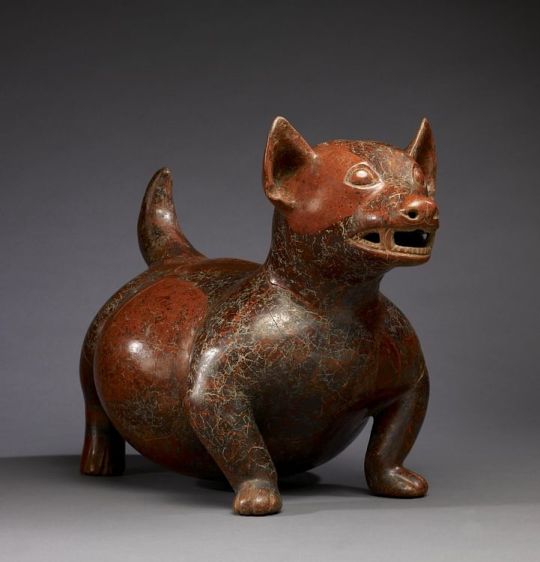
Dogs and Their Collars in Ancient Mesoamerica
Dogs were an integral aspect of the lives of the people of Mesoamerica regardless of their location or culture and, throughout the region, were recognized as liminal beings belonging not only to the natural world and that of humans but to this world and the next.
Dogs were believed by the Aztec, Maya, and Tarascan to travel between worlds, assist the souls of the dead, warn of dangers to the living and, at the same time, were regarded as a food source, companion, and guardian in daily life. The dogs of the indigenous people are frequently depicted without collars because it seems to have been thought that these would restrict the dog’s movement between worlds.
Even so, collars did exist – fashioned for humans to wear – and it is thought that these developed from dog collars. This model changed with the arrival of Christopher Columbus (l. 1451-1506) in the West Indies in 1492. Columbus’ dogs all wore collars and were much larger than the animals the natives were used to. The European dogs had also been trained for war and so were far more savage than any dog a Taino, for example, had ever known.
After Columbus, who sailed for Spain, more Spanish invaders arrived and made their way north through South America to Mesoamerica, bringing Christianity with them. Christianity began to replace indigenous beliefs and, as the Catholic Church claimed dogs had no souls, belief in the supernatural power of the dog declined. Although there were no doubt many indigenous peoples who still believed in the dog as a psychopomp, there is no widespread evidence of this belief after the arrival of the Spanish as compared with pre-Columbian Mesoamerica. The descendants of the ancient people of the region have only begun restoring their ancient cultures in the past 100 years and so, in time, the dog has slowly regained the status it once held.
Olmecs & Their Dogs
The Olmecs of Mesoamerica lived in the lowlands along the Gulf of Mexico c. 1400-400 BCE and bred dogs as food. The Olmecs are the oldest civilization in the western hemisphere, inventing the first written language of Mesoamerica as well as distinctive art and architecture which would influence the later civilizations of the Aztecs, Maya, and Tarascan, among others. The sacred animal of the Olmecs was the jaguar which was thought to be spiritually related to the dog. The dog was therefore associated with the divine while, at the same time, serving as a food source. There seems to have been no contradiction in this as dogs, servants and messengers of the gods, also served humanity by graciously offering themselves as food.
A tomb of the Zoque peoples, a Mesoamerican population thought to be descended from the Olmec, was discovered in 2010 in Chiapa de Corzo containing jade collars. These were ornamental collars for human wear but could have developed from the dog collar. The tomb dates to between 700-500 BCE and is the oldest pyramid tomb yet found in the region.
The indigenous people of modern-day Mexico, Belize, Guatemala, Honduras and neighboring regions, built pyramids as temples, not as tombs, and this find is thought to reflect an earlier Olmec practice of keeping precious objects in temples – one that was observed by later cultures. The jade collars, though clearly for human use, could have linked an officiant with the spirit of a liminal dog who would bring messages from the gods.
Continue reading...
44 notes
·
View notes
Text

"defending civilization against bugs"
lol the mosquito sculpture

---
Sir Ronald Ross had just returned from an expedition to Sierra Leone. The British doctor had been leading efforts to tackle the malaria that so often killed English colonists in the country, and in December 1899 he gave a lecture to the Liverpool Chamber of Commerce [...]. [H]e argued that "in the coming century, the success of imperialism will depend largely upon success with the microscope."
Text by: Rohan Deb Roy. "Decolonise science - time to end another imperial era." The Conversation. 5 April 2018.
---
[A]s [...] Diane Nelson explains: The creation of transportation infrastructure such as canals and railroads, the deployment of armies, and the clearing of ground to plant tropical products all had to confront [...] microbial resistance. The French, British, and US raced to find a cure for malaria [...]. One French colonial official complained in 1908: “fever and dysentery are the ‘generals’ that defend hot countries against our incursions and prevent us from replacing the aborigines that we have to make use of.” [...] [T]ropical medicine was assigned the role of a “counterinsurgent field.” [...] [T]he discovery of mosquitoes as malaria and yellow fever carriers reawakened long-cherished plans such as the construction of the Panama Canal (1904–1914) [...]. In 1916, the director of the US Bureau of Entomology and longtime general secretary of the American Association for the Advancement of Science rejoiced at this success as “an object lesson for the sanitarians of the world” -- it demonstrated “that it is possible for the white race to live healthfully in the tropics.” As Timothy Mitchell writes: “In 1915, the year after the canal’s completion, the newly established Rockefeller Foundation took over the mosquito campaign from the U.S. Army and launched a worldwide program" [...]. The [...] measures to combat dangerous diseases always had the collateral benefit of social pacification. In 1918, George Vincent, president of the Rockefeller Foundation, candidly declared: “For purposes of placating primitive and suspicious peoples, medicine has some decided advantages over machine guns." The construction of the Panama Canal [...] advanced the military expansion of the United States in the Caribbean.
Text by: Fahim Amir. "Cloudy Swords." e-flux Journal Issue #115. February 2021.
---
Richard P. Strong [had been] recently appointed director of Harvard’s new Department of Tropical Medicine [...]. In 1914, just one year after the creation of Harvard’s Department of Tropical Medicine, Strong took on an additional assignment that cemented the ties between his department and American business interests abroad. As newly appointed director of the Laboratories of the Hospitals and of Research Work of United Fruit Company, he set sail in July 1914 to United Fruit plantations in Cuba, Guatemala, Honduras, Costa Rica, and Panama. […] As a shareholder in two British rubber plantations, [...] Strong approached Harvey Firestone, chief executive of the tire and rubber-processing conglomerate that bore his name, in December 1925 with a proposal to conduct an extensive biological and medical survey of the interior region of Liberia. Strong found a receptive ear. Firestone had negotiated tentative agreements in 1925 with the Liberian government for [...] a 99-year concession to optionally lease up to a million acres of Liberian land for rubber plantations. [...]
Nearly all of the [Harvard tropical medicine] department’s expeditions were to industrial plantations in the making. […] [I]nfluenced by the recommendations and financial backing of Harvard alumni such as Philippine governor Gen. William Cameron Forbes and patrons such as Edward Atkins, who were making their wealth in the banana and sugarcane industries, Harvard hired Strong, then head of the Philippine Bureau of Science’s Biological Laboratory, and personal physician to Forbes, to establish the second Department of Tropical Medicine in the United States [...].
Strong and Forbes both left Manila for Boston in 1913. Strong began assembling a team of researchers and a course of instruction to take advantage of the increasing overseas presence of US firms. Forbes became an overseer to Harvard University and a director of United Fruit Company, the agricultural products marketing conglomerate best known for its extensive holdings of banana plantations throughout Central America. […] In 1912 United Fruit controlled over 300,000 acres of land in the tropics [...] and a ready supply of [...] samples taken from the company’s hospitals and surrounding plantations, Strong boasted that no “tropical school of medicine in the world … had such an asset.” “It is something of a victory for Harvard,” he argued. “We could not for a million dollars procure such advantages.”
Over the next two decades, he established a research funding model reliant on the medical and biological services the Harvard department could provide US-based multinational firms in enhancing their overseas production and trade in coffee, bananas, rubber, oil, and other tropical commodities. [...] As the expedition set sail for Monrovia, Strong wrote in his diary that he hoped their efforts would push the United States to “exert a more stimulating influence upon the development of the … country and its people” as it had in the Philippines, Panama, and Puerto Rico. [...] Harvard’s Department of Tropical Medicine was thoroughly entangled in the material relationships – transportation infrastructure, labor regimes, and commodity production – that were instrumental in advancing the interests of firms like United Fruit, Firestone Tire and Rubber Company, and the American Chicle Company as they transformed landscapes across the globe.
Text by: Gregg Mitman. "Forgotten Paths of Empire: Ecology, Disease, and Commerce in the Making of Liberia's Plantation Economy." Environmental History Volume 22 Number 1. January 2017.
#literally that post i made earlier today about frustration of seeing the same colonial institutions and leaders showing up in every story#about plantations and forced labor my first draft i explicitly mentioned the harvard school tropical medicine and kew royal botanic garden#abolition#ecology#imperial#colonial#bugs#indigenous#multispecies
80 notes
·
View notes
Text
Days 13-15: Cards, Currents and Caribs in Rio Dulce
I initially reserved only two nights at our little paradise in Rio Dulce. Having discovered, once again, how sweet the destination is, we let them know that we plan on staying another two nights. The challenge: Hurricane Julia was going to strike Guatemala as a tropical storm. We had a choice of heading out as planned after two nights and possibly missing the storm, or staying put. We decided to stay, hoping for the best.
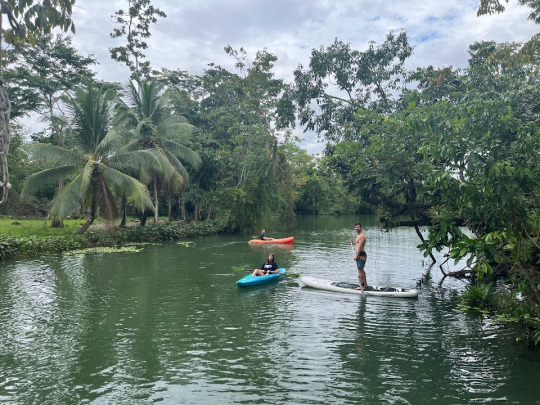
Family did rainy day kayaking (my hand was still too swollen to do any sport), we ate wonderful food, played card games and simply relaxed. There were so many secret places on the pathways under the cabins on stilts, with hammocks, comfy mattresses, fun swings, reading corners with books on sailing adventures or travel to Laos or you name it...
Once again we had to make decisions about how to get to our next destination (though this time we knew what it would be... Roatan!) We learned that the shuttle we planned to take on Tuesday was cancelled due to the storm... the roads were blocked and impassable. The next shuttle would only be on Shabbat. Clearly unacceptable (since Sunday is my last day of these travels...). So... we asked everybody we could imagine for creative solutions. We finally found one, and decided to go for it: a private car (which hopefully could pass the flooded roads) across the Honduras border and then continue to the airport at San Pedro Sula (the most dangerous city on earth? or at least up there... 200 homicides for every 100,000 people, and frequent kidnappings on the streets, we've been told), from which we would fly to Roatan. We bought flex-rate tickets on some unknown carrier, hoping we would make it in time, and reserved a place in Roatan, later letting them know that we hoped we would make it, but really weren't sure... They were wonderfully flexible and kind.
So with plans all set, we could proceed with enjoying ourselves thoroughly.
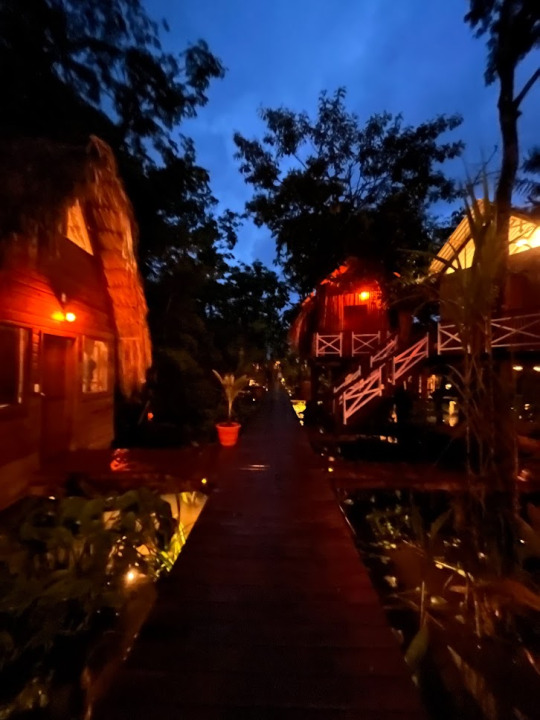
The constant rain from the storm finally stopped on Sunday night... though, unexpectedly, that's when things got a bit scary. Yuval and I were hanging out on the dock, in comfy Adirondack chairs, when I noticed some water lilies swiftly flowing by. First a few, then more, then dozens, then pieces of earth. Then, the previously calm water sounded like a running river, and quickly looked like rushing rapids. Concerned that we might be at a "oh-how-pretty-the-water-is-receding" moment, we carefully watched the staffs' responses to the rapidly rising water. They, too, appeared anxious, quickly reinforcing the boats to the docks, including the catamarans entrusted to them by distant owners. They removed the hammocks and swings and placed all the equipment on the higher-stilt locations.
We continued to watch until a late hour, when we finally decided to sleep, hoping our high-stilted cabin would keep us safe and steady above the rushing water.
The following day, we woke to the sound of screeching monkeys (as we did each morning- the lodge is in the middle of a monkey reserve), happy to be in one piece and dry. Venturing down the stairs from our cabin, the once-clear water all around us was brown with debris from the banks, and the few water lilies that remained were bent from the force of the water.
The day before we had arranged to be picked up by boat and do a tour of the area, specifically to Livingston, a town on the Caribbean coast accessible only by boat. Rains now stopped, we had perfect weather for exploring. We seemed to be almost alone on the river, barring a fisherman here and there and, as we approached our destination, a kayak or two.

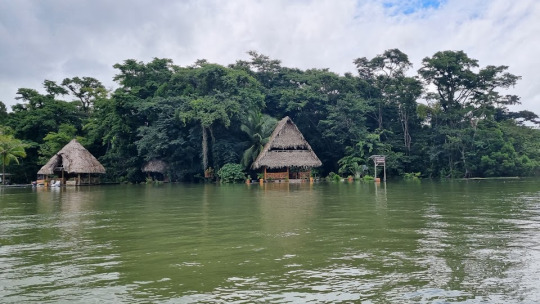
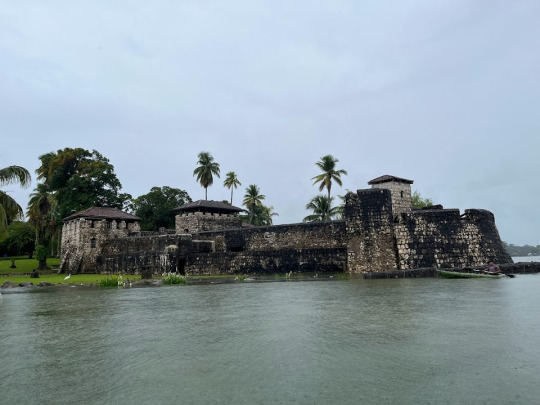
When we reached Livingston one of the first people we met was a Garifuna man who, hearing we were from Israel, mentioned that he met and played music with Idan Rachel, and introduced himself as a leader of the community. He pointed the direction we should go if we wanted to get a taste of Garifuna culture, instead of the Mayan influence that was becoming far more prevalent. We happily steered ourselves that way. He seemed to be a constant presence, later asking us if we wanted to be taken to the "less seen" parts of town, sharing insights and knowledge, a sort of ad hoc tour guide. When the trail started becoming much more (too much) off the beaten path (and filled with garbage, plastic and puddles in narrow alley ways) we thanked him but preferred not to take any unnecessary risks and went on our way. At his request, we left him a donation for a feeding program he initiated... or simply, for his initial guidance and information. For, in the short time we were together, I felt I learned some wonderful insights about this little-known community. I had assumed they arrived there as slaves. He explained they were the original native people there, Caribs, who crossed the Caribbean to such places on their own, and established communities throughout. He explained they are 2% of Guatemala's population. Clearly, they face many challenges. I hope, somehow, they thrive.

We continued to explore, had a freshly-fished fish for a snack and then returned to the boat to continue our tour.
We stopped by floating gardens, islands with thousands of birds, a cave and a hot spring which was flooded from the rains so was only luke-warm. We finally returned home close to evening.
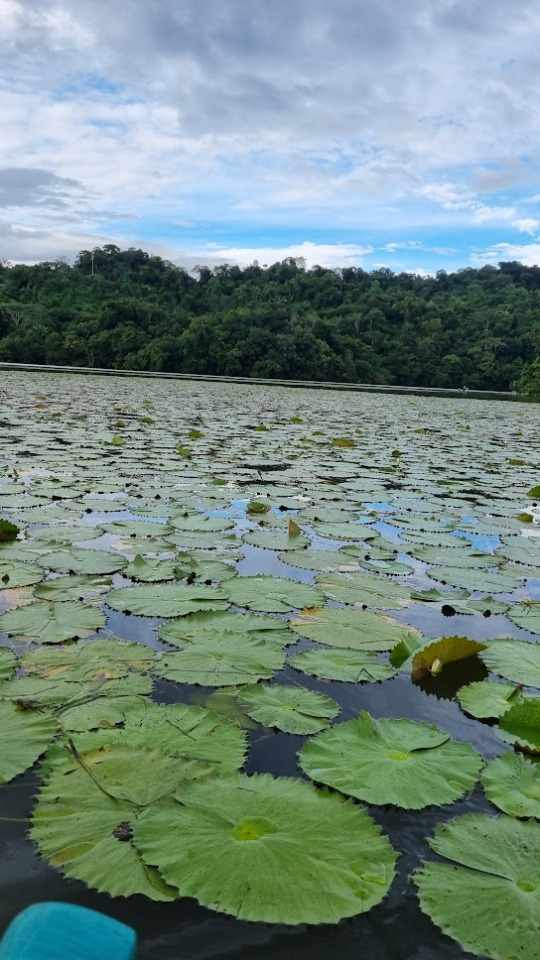
Our last night in Rio Dulce, we spent the night playing a new card game the kids taught us (Cambio, THE game Israeli backpackers play in South America...) and talking to another traveller from Canada who planned to travel and work remotely through 2026, eventually reaching Israel...
Sigh, the end is in sight. Tomorrow, our next stop, our last stop, Roatan.
2 notes
·
View notes
Text
Cryptocurrency exchange Binance is expanding its offerings in Latin America with the launch of a new crypto-to-bank account payment solution for the region.On Aug. 30, Binance said it's working with licensed transfer processing providers for its new “Send Cash” product that allows users from nine countries to transfer crypto funds directly to bank accounts.The new function is available for users in Colombia, Honduras, Guatemala, Argentina, Costa Rica, Paraguay, the Dominican Republic, Panama, and Mexico. Users from these countries will be able to send money via Binance Pay to recipients with bank accounts in Colombia and Argentina. Binance Pay, which has seen growth in Africa, Asia and Eastern Europe is the exchange’s native crypto payment technology platform.Send cash.
Instant. Low fees. https://t.co/sqBnIAqABQ— CZ Binance (@cz_binance) August 29, 2023
Binance’s regional vice president for Latin America Min Lin said the firm was developing new crypto use cases “in everyday life.”“Individuals and businesses in the region are very open to innovations that can solve the specific challenges they face,” he added.Binance highlighted the challenges in Latin America citing a 2021 World Bank study that said 42% of adults lack access to a bank account.Crypto is often used for remittances in the region and adoption is increasing as rampant inflation is still ongoing in many LATAM countries.Venezuela, not included in Binance’s new service, has the highest inflation rate in the world at 398%, according to Trading Economics.Argentina has the fourth highest inflation globally at 113%. Inflation also remains in the double figures for Haiti, Cuba, and Colombia.However, it hasn’t all been smooth sailing for Binance in Latin America. On Aug. 24 the exchange said it was suspending its crypto debit card services in the region.Meanwhile, stablecoin issuer Circle announced a partnership on Aug. 29 to bring its USD Coin (USDC) to LATAM’s largest fintech firm Mercado Pago which will offer the stablecoin in Chile.
Source
0 notes
Text
Caribbean Sea - Facts That Help You Have the Charter of Your Life
What makes a Caribbean yacht charter vacation so attractive?
The Caribbean Sea is huge - it spans over an area of 2,754,000 km² in the North Atlantic Ocean. There are over 7000 islands to choose from and they all have their individual character. So you are spoilt for choice here!
This big body of water is bordered in the South by Colombia and Venezuela and in the North by the Greater Antilles starting with Cuba. To its West lie the Central American countries of Mexico, Guatemala, Belize, Honduras, Costa Rica, Nicaragua and Panama. In the East you find the Lesser Antilles, which are divided in the Leeward Islands in the North and the Windward Islands in the South.
A myriad of gulfs and many reefs are contained in the Caribbean Sea. There is the Mesoamerican Barrier Reef which stretches over 1,000 km along the Central American Cayman Yacht Charters and is the 2nd largest barrier reef in the whole world. This is why this sea boasts such fantastic underwater fauna and flora for you to admire and explore. Diving and snorkeling here is absolutely paradisiac. In general, there is a high diversity of geography - there are coral based islands and others of volcanic origin. Depending on the altitude, the landscape can change from jungle to forest and woodland to savannah, mangrove and lagoon vegetation.
In the Caribbean you encounter tropical temperatures moderated by the trade winds. This area is spoilt by year-round sunshine and steady temperatures. The tidal range doesn't exceed half a metre. This makes sailing and mooring as well as swimming very safe. There are plenty of bays and coves where you can moor your boat, the huge number of islands and islets offers an endless possibility for sailing trips and the prevailing trade winds are predictable in force and timing, almost like clockwork.
In addition, there are many colourful festivals, different cultures and lovely towns with colonial style architecture to explore. You can sample the rich cuisine which consists of a fusion of African, Amerindian, European, East Indian, Arab and Chinese Cuisine.
What cruising grounds are there in the Caribbean?
Head to the Windward Islands like Martinique, Barbados, Saint Lucia, Saint Vincent and the Grenadines and Grenada. Saint Lucia offers wonderful long beaches to cruise along and the infrastructure for sailing is superb. Rodney Bay on the north side is a very large bay with only a small opening to the sea, due to which it is completely protected and the waters are calm. Here you can moor up in the prestigious Rodney Bay Marina that offers 253 berths for sailboats and superyachts up to 85 m along with many services. The exclusive marina at Marigot Bay on the west side is equally beautiful and protected. It can host 40 yachts up to 75 m. If you moor up there you get treated as a guest of the 5-star resort adjacent to the marina and can use all of its facilities.
Cruise the Leeward Islands including Anguilla, Antigua, Barbuda, Saint Kitts and Nevis, Guadeloupe, Saint Barths and Saint Martin. Enjoy some easy island hopping mixed with open-water passages there. Take advantage of the good duty-free shopping and the many resorts. Especially Antigua has a very indented coastline and therefore many protected marinas. Sail the idyllic British Virgin Islands located about 100 km east of Puerto Rico. They include Tortola, Anegada, Jost Van Dyke and Virgin Gorda. This popular charter destination is boasting stunning shorelines with many coral reefs in different colours. For instance, pass by the coral atoll of Anegada, which is the resting point for a lot of sunken ships and perfect for wreck diving. The British Virgin Islands stretch along either side of the approximately 90 km long Sir Francis Drake Channel and are perfectly suited for line-of-sight sailing.
Lap up the old charm of Cuba and sail around the stunning Canarreos Archipelago with the famous Cayo Largoisland south of Cuba. It has about 350 islets and is almost as long as the Florida Keys. There you encounter miles and miles of pristine white sandy beaches and bright turquoise coral reefs. This is a yacht charter in a paradise-like environment.
Which weather systems are important for your bareboat yacht charter in the Caribbean?
The climate here has often been described as "perpetual spring" thanks to the cooling easterly trade winds which create lovely temperatures throughout the year. They are always in the 20s° and 30s° and vary from summer to winter by 2° - 5° in the southern islands and by 10° - 20° in the northern islands.
Rainfall is heavily dependent on altitude and topography and generally the eastern shores, especially Dominica, Martinique and Saint Lucia, receive more rain. The precipitation is very different from island to island and within every island itself. In any case it rains most in the mountains and Mount Pelee in Martinique receives a whopping 6 m per year. The nearby Presqu'ile de la Caravelle on the east coast gets six times less. The driest islands are the Netherland Antilles consisting of Aruba, Curaçao and Bonaire. The winter months have the least rainfall in the Caribbean. This is also the main charter season, when holidaymakers from northern countries try to escape the cold weather.
June to November is hurricane season and September and October run the highest risk for tropical storms. April, June, and July have the best combination of warm temperatures and low rainfall. May brings a small rainy season in many places. From December to February it´s best to stick to southern destinations, like Saint Lucia, Antigua and Barbados.
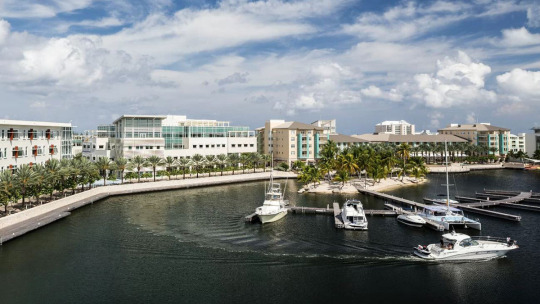
0 notes
Link
Excerpt from this essay written by Bill McKibben published by The New Yorker:
The “crisis” at the border is dominating the news, and, as my colleague Jonathan Blitzer has written, the immediate focus is on the political battle to prevent Joe Biden from passing meaningful immigration reform. But this might also be a moment for thinking about what globalism means in a world where borders ultimately can’t offer protection against the most serious threats.
To give an example: owing in part to climate change, there was a record hurricane season last year, with the last two storms, Eta and Iota, striking Central America. As Nicole Narea explained in a recent article in Vox, the Northern Triangle countries—Honduras, Guatemala, and El Salvador—have been afflicted by climate-induced drought for a decade, leaving 3.5 million people facing food insecurity, but the floods from those two storms produced even more savage damage. Twelve hundred schools were damaged or destroyed; forty per cent of corn crops and sixty-five per cent of the bean harvest were lost. As a percentage of G.D.P., the damage is greater than that done by the worst storms ever to hit the United States, yet the people of these countries did comparatively little to cause the climate crisis—whereas the four per cent of us who live in this country have produced more greenhouse gases than the population of almost any other nation. So there’s really no way to pretend that migrants arriving at our southern border have no claim on America. Honduras could have built the biggest, most beautiful wall on its northern border, and our CO2 would still have sailed right across it.
And it’s not as if this is an isolated case. As early as 2017, according to the organizers at climate-refugees.org, sixty per cent of displaced people around the world were on the move because of “natural” disasters, not civil conflict. In the past six months, according to the International Federation of the Red Cross and Red Crescent Societies, about eighty per cent of displacements have been the result of disasters, “most of which are triggered by climate and weather extremes.” As Axios reported last week, using a projection model created by the Times, ProPublica, and the Pulitzer Center, “migration from Central America will rise every year regardless of climate change,” but, “in the most extreme warming scenarios, more than 30 million migrants would head toward the U.S. border over the next 30 years.”
6 notes
·
View notes
Text
Wednesday, February 24, 2021
First Arctic Navigation in February
(Bloomberg) A tanker sailed through Arctic sea ice in February for the first time, the latest sign of how quickly the pace of climate change is accelerating in the Earth’s northernmost regions. The Christophe de Margerie was accompanied by the nuclear-powered 50 Let Pobedy icebreaker as it sailed back to Russia this month after carrying liquified natural gas to China through the Northern Sea Route in January. Both trips broke navigation records. The experimental voyage happened after a year of extraordinarily warm conditions in the Arctic that have sent shockwaves across the world, from the snowstorm that blanketed Spain in January to the blast of cold air that swept through Canada in mid-February, moving deep into the South as far as Texas. The Arctic is warming more than twice as quickly as the rest of the world and the area covered by ice there has reached historic lows multiple times over the past 12 months. The melting in the region is already in line with the worst-case climate scenarios outlined by scientists.
Biden mourns 500,000 dead, balancing nation’s grief and hope
(AP) With sunset remarks and a national moment of silence, President Joe Biden on Monday confronted head-on the country’s once-unimaginable loss—half a million Americans in the COVID-19 pandemic—as he tried to strike a balance between mourning and hope. “We often hear people described as ordinary Americans. There’s no such thing,” he said Monday evening. “There’s nothing ordinary about them. The people we lost were extraordinary.” The president, who lost his first wife and baby daughter in a car collision and later an adult son to brain cancer, leavened the grief with a message of hope. “This nation will smile again. This nation will know sunny days again. This nation will know joy again. And as we do, we’ll remember each person we’ve lost, the lives they lived, the loved ones they left behind.” He said, “We have to resist becoming numb to the sorrow. We have to resist viewing each life as a statistic or a blur or, on the news. We must do so to honor the dead. But, equally important, to care for the living.”
Texans Needed Food and Comfort After a Brutal Storm. As Usual, They Found It at H-E-B.
(NYT) The past week had been a nightmare. A winter storm, one of the worst to hit Texas in a generation, robbed Lanita Generous of power, heat and water in her home. The food she had stored in her refrigerator and freezer had spoiled. She was down to her final five bottles of water. But on Sunday, as the sun shined and ice thawed in Austin, Ms. Generous did the same thing as many Texans in urgent need of food, water and a sense of normalcy: She went to H-E-B. “They’ve been great,” she said, adding with just a touch of hyperbole: “If it hadn’t been for the bread and peanut butter, I would have died in my apartment.” H-E-B is a grocery store chain. But it is also more than that. People buy T-shirts that say “H-E-B for President,” and they post videos to TikTok declaring their love, like the woman clutching a small bouquet of flowers handed to her by an employee: “I wish I had a boyfriend like H-E-B. Always there. Gives me flowers. Feeds me.” For many Texans, H-E-B reflected the ways the state’s maverick spirit can flourish: reliable for routine visits but particularly in a time of disaster, and a belief that the family-owned chain—with a vast majority of its more than 340 locations inside state lines—has made a conscious choice to stay rooted to the idea of being a good neighbor. “It’s like H-E-B is the moral center of Texas,” said Stephen Harrigan, a novelist and journalist who lives in Austin. “There seems to be in our state a lack of real leadership, a lack of real efficiency, on the political level. But on the business level, when it comes to a grocery store, all of those things are in place.”
Hunger in Central America skyrockets, U.N. agency says
(Reuters) The number of people going hungry in El Salvador, Guatemala, Honduras and Nicaragua has nearly quadrupled in the last two years, the United Nations said on Tuesday, as Central America has been battered by an economic crisis. New data released by the UN’s World Food Program (WFP) showed nearly 8 million people across the four countries are experiencing hunger this year, up from 2.2 million in 2018. “The COVID-19-induced economic crisis had already put food on the market shelves out of reach for the most vulnerable people when the twin hurricanes Eta and Iota battered them further,” Miguel Barreto, WFP Regional Director for Latin America and the Caribbean, said in a statement.
Prison riots in Ecuador leave 62 dead
(AP) Sixty-two inmates have died in riots at prisons in three cities in Ecuador as a result of fights between rival gangs and an escape attempt, authorities said Tuesday. Prisons Director Edmundo Moncayo said in a news conference that 800 police offices have been helping to regain control of the facilities. Hundreds of officers from tactical units had been deployed since the clashes broke out late Monday. Moncayo said that two groups were trying to gain “criminal leadership within the detention centers” and that the clashes were precipitated by a search for weapons carried out Monday by police officers.
Mount Etna eruption lights up Sicily's night sky
(BBC) Mount Etna is erupting again, and its hot lava fountains are illuminating the Sicilian sky. The eruption began earlier this week, and Etna has since been spewing massive orange plumes of smoke and thick clouds of ash. Etna is Europe's most active volcano, and it erupts relatively often. The last major eruption was in 1992. Its eruptions have rarely caused damage or injury in recent decades - and officials believe this eruption is no exception. Stefano Branco, the head of the National Institute for Geophysics and Volcanology (INGV) in the nearby city of Catania, told Italian news agency AGI earlier this week: "We've seen worse."
Cow science
(Foreign Policy) A new national exam on cows developed by the Indian government-backed National Cow Commission has been shelved following controversy over its less-than-scientific contents. The curriculum for the test involved erroneous claims about the virtues of Indian cows that were widely ridiculed by the country’s scientific community. Among the “facts” on display: That Indian cows have a special “solar pulse” in their humps which can supposedly convert sun rays into vitamin D that is then passed on to milk, and an assertion that Indian cows are “strong” whereas foreign cows are “lazy.” The issue of cows, considered sacred by Hindus, and their treatment has become even more of a cultural wedge issue in India following the rise of Prime Minister Narendra Modi’s Hindu nationalist government, with sometimes deadly results. Attacks by vigilante “cow protection” groups killed 44 people between 2015 and 2018 according to Human Rights Watch, with Muslims among the majority of those targeted.
Japan creates Minister of Loneliness to fight COVID-19 suicides
(New York Post) Japan just appointed a Minister of Loneliness—to try to combat its exploding suicide rate amid COVID-19. Japanese Prime Minister Yoshihide Suga named Tetsushi Sakamoto, a cabinet member already trying to beef up the depressed country’s birthrate, to the post. Suga noted earlier this month that Japanese women, in particular, have been struggling with depression since the coronavirus pandemic began about a year ago—with nearly 880 female suicide victims in the country alone in October, a 70 percent increase over the year before, the BBC reported. Japanese suicide expert Michiko Ueda told the BBC that part of the problem involves an increasing number of single women in the country who don’t have stable employment. “A lot of women are not married anymore,” she said. “They have to support their own lives, and they don’t have permanent jobs.”
Facebook Strikes Deal to Restore News Sharing in Australia
(NYT) Facebook said on Monday that it would restore the sharing and viewing of news links in Australia after gaining more time to negotiate over a proposed law that would require it to pay for news content that appears on its site. The social network had blocked news links in Australia last week as the new law neared passage. The legislation includes a code of conduct that would allow media companies to bargain individually or collectively with digital platforms over the value of their news content. Facebook had vigorously objected to the code, which would curb its power and drive up its spending for content, as well as setting a precedent for other governments to follow. The company had argued that news would not be worth the hassle in Australia if the bill became law. But on Monday, Facebook returned to the negotiating table after the Australian government granted a few minor concessions.
U.S.-Saudi ties
(Foreign Policy) The families of the three U.S. service members killed and 13 others injured by Mohammed Alshamrani, a Saudi airman who went on a shooting spree at Naval Air Station Pensacola in 2019, are suing Saudi Arabia’s government, alleging that the kingdom failed to screen him appropriately before sending him to the United States for training. The families are filing the lawsuit against Saudi Arabia based on a 2016 law that allows U.S. citizens to sue foreign governments over terrorist attacks—legislation that was initially passed in order to allow the families of 9/11 victims to bring a civil suit against Saudi Arabia.
Italian Ambassador Among Three Killed in Attack on U.N. Convoy in Congo
(NYT) For Luca Attanasio, Italy’s ambassador to the Democratic Republic of Congo, humanitarian work was at the core of his mission. The 43-year-old had moved with his wife to the capital, Kinshasa, in 2017, where their family grew to include three young daughters. He rose to the rank of ambassador in 2019, the pinnacle of his diplomatic career. On Monday, Mr. Attanasio was among three people killed in an attack on a humanitarian convoy near the city of Goma, the World Food Program and Italy’s Foreign Ministry said, the latest in a wave of violence in that part of the central African nation. The deaths of Mr. Attanasio; an Italian Embassy official, named by the Foreign Ministry as Vittorio Iacovacci; and Mustapha Milambo, a driver for the World Food Program, have rattled the international diplomatic community and drawn condemnation from across the globe.
Flood damage and insurance
(NPR) Right now, over 4 million houses and small apartments in the contiguous United States are at substantial risk of expensive flood damage, and the cost of flood damage to homes will increase by 50 percent over the next 30 years according to the First Street Foundation. As the climate changes, places that were perfectly safe to live in will no longer be as sure of bets as they once were, and the costs are about to be a serious reality check. The National Flood Insurance Program is $36 billion in debt because of underestimated risks. Over the next several years, FEMA plans to raise rates up to 18 percent a year until prices are accurate, starting this October.
1 note
·
View note
Text
Caravan to Calamity or Aspiration
In 1502 Amerigo Vespucci, another Italian sailing for Spain, landed in Honduras and on returning to Spain declared that Columbus had not discovered India, but two conjoined continents. In his honor this discovery these new continents were called the Americas. Later termed North and South America. So when one says “America First,” or “Make America Great Again” should that not mean all of the Americas?
There is what is called a “Caravan” of people moving northward to the US border. This is not an invasion, these are impoverished, hungry migrants with just their sandals on their feet and their clothes on their backs walking 1000 miles seeking a better life. What is needed is humanitarian investment. Let me explain.
Making all of North and South America Great means that all of America (and England also in the case of Belize) must intervene. Mexico has already stepped up and offered all migrants resettlement in southern Mexico with rights to live, work, healthcare, banking, children’s education etc. These migrants simply want the opportunity to “pull themselves up by their boots straps.” However, we must see to it that they have bootstraps.
Where these migrants come from, mostly Honduras, Guatemala and El Salvador, there is little industry, high unemployment, no healthcare. What they are forced to tolerate is injustice, and little if any police protection from violent gangs. These people see no future for themselves, so they are forced to leave to seek new hope.
We, primarily Mexico, US and Canada, need to seek: 1. Stabilization of all Central American Democratic Governments and economies, 2. An environment such as Mexico has to welcome refugees, 3. New opportunity for these refugees.
In North America, particularly the US, there is a void of skilled and semi-skilled labor. This is because vocational training has all but wiped out. Mexico, the USA and Canada needs plumbers, cement workers carpenters, electricians, and shopkeepers. I also see a greater need for sheet metal workers, auto mechanics, road paving and public safety.
After World War II the US sponsored the Marshall Plan for Europe and Japan. Certainly, with North America and South America working together as we could under a new NAFTA and a newly created SAFTA, we can uplift the economies in Central America. Factories can create low cost products just like originally Japan in the 1950’s, Korea in the 1960’s, and China in the 1970’s once did.
Immigration reform is a hot topic. In the US we already depend on migrant labor for harvesting most of our vegetable and fruit crops. These refugees need place to go. Let’s give them the legal option of applying for green card status. With Mexico’s permission, the US, Mexico and Canada could set up a migrant processing center in southern Mexico. Migrants can apply to stay in Mexico as Mexico has already offered resettlement, others may be documented and apply for US or Canada residence based on their past history, education and vocational skills.
Many of these refugees want to learn a vocation, Vocational educations are in demand in North and South America. What I propose is to set up a non-profit 501c3 corporation to assist In preparing migrant refugees with attaining needed vocational skills. Basic at first, such as road paving, painting, landscaping and public utility work, then add carpentry, plumbing, electrical trades. Other trades such as auto mechanics, sheet metal work could be added later. These migrants want to work, not live on the streets or on welfare.
The location: It would be easy to find and or construct some basic buildings preferably within walking distance from where they would be living with the assistance of the Mexican Government or possibly southern Texas. Next we need to find some teachers, preferably some retired volunteers, who speak Spanish. I want to establish a Go Fund Me Account to raise money for a 501c3 non profit.
I am just throwing some thoughts out there to generate a response, conversation, feedback on these ideas. Write to me on Linked In.
1 note
·
View note
Text



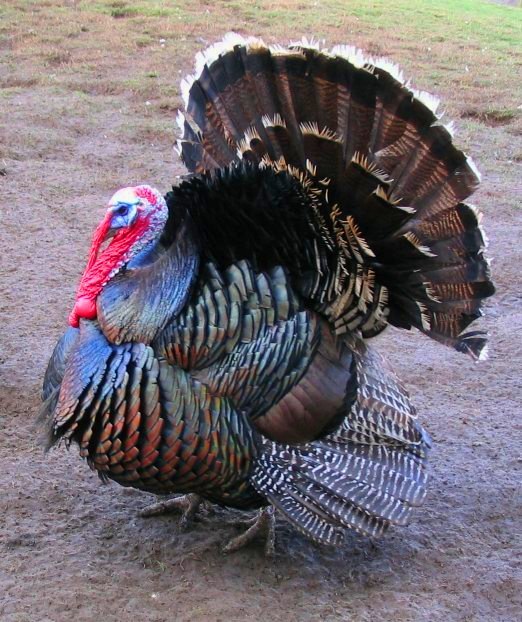
Six Weird Turkey Facts to Amp Up Your Thanksgiving
Nov 21, 2017 Andrew Amelinckx
Keep these in your back pocket in case someone tries to break your family's "no politics at the table" rule.
1. Turkeys were first domesticated by the Mayans
We don’t usually associate turkeys with the Maya people, but maybe we should. This ancient Mesoamerican civilization flourished from 1850 B.C. to 250 A.D. and stretched from what is now southeastern Mexico all the way down to Honduras in Central America. They were incredibly skilled mathematicians, calendar makers, builders and artists. And they were also the first to domesticate the turkey more than 2,300 years ago.
2. There are two competing theories on why we call these birds “turkeys”
One theory, according to NPR, has to do with mistaken identity. When the British arrived in what is now Massachusetts and saw this wildfowl, they mistook it for a larger version of the African guinea fowl, a popular food back home. The guinea fowl was known at the time as a Turkey coq because it was imported to England by Turkish traders. In the case of the American turkey, the “coq” part got dropped and they have been known as turkeys ever since. The second theory holds that when the North American birds (the same ones first domesticated by the Mayans) began to be exported to England in the 1500s, they came to the British Isles via Constantinople and became known as Turkey coqs because of their association with the Turks, and then eventually shortened to “turkeys.”
3. They were a popular meal in Europe before the Pilgrims’ Thanksgiving dinner
📷King Ferdinand II really loved turkey. Wikimedia Commons
We tend to think of turkeys in conjunction with the Pilgrims, but Europeans were scarfing down the bird more than a century prior to Pilgrims stepping foot in the New World. Europeans fell in love with turkey during the Spanish conquest of the Americas, which began with Christopher Columbus in the late 1400s. In fact, they were so taken by the turkey that in 1511, King Ferdinand of Spain ordered that all ships sailing from the Americas carry five male and five female turkeys back to his country. The first record of turkey farming in Spain dates to 1530, by which time the bird could be found on plates in Rome and France, too. Around this time, they also started making inroads in England.
4. There are only two species of turkeys in the world, and they both live in the Americas
📷An ocellated turkey. Dick Daniels via Wikimedia Commons
There’s the wild turkey, Meleagris gallopavo, which lives in the United States and Canada and would have been the kind eaten by the Pilgrims. The other species, the ocellated turkey, Meleagris ocellata, is found from Mexico’s Yucatan Peninsula down to Guatemala. The latter is smaller and more brightly colored. It’s also the ancestor of today’s domestic turkey, the kind that graces dinner tables at Thanksgiving.
5. Domestic turkeys are one of the least genetically diverse types of livestock around
📷A broad breasted bronze male. Wikimedia Commons.
You can thank our love for white meat for the lack of genetic diversity in domestic turkeys. According to a Smithsonian Conservation Biology Institute DNA study from 2012, selective breeding programs focusing on body size and breast development curtailed the domestic turkey’s genetic variation. Today the various commercial breeds, including the Broad Breasted White – the dominant commercial variety – are less genetically diverse than wild turkeys and even other livestock, like pigs and chickens.
6. Turkeys (and chickens) are closer to their dinosaur ancestors than other birds
📷The four-winged Microraptor, a member of the Dromaeosauridae, a group of dinosaurs closely related to birds. Wikimedia Commons
A 2014 study from Kent University in England found that turkey and chicken chromosomes have undergone the fewest number of changes from their ancient ancestor, a feathered dinosaur, compared to other types of birds. If you’ve spent any time around turkeys (more specifically: have been chased by one) this comes as no surprise as they’re the closest thing to Jurassic Park as you can get in real life.
https://modernfarmer.com/2017/11/six-weird-turkey-facts-amp-thanksgiving-conversations/
0 notes
Text
comment on my post:

aside from, like, their infamous social world of nepotism/king-making and their long history of training eugenicists who legitimized scientific racism; lawyers who built legal frameworks for slavery/Jim Crow stuff; and economists who justify continued disenfranchisement, poverty, military interventions/invasions? here’s some of the more recent stuff i’ve been reading.
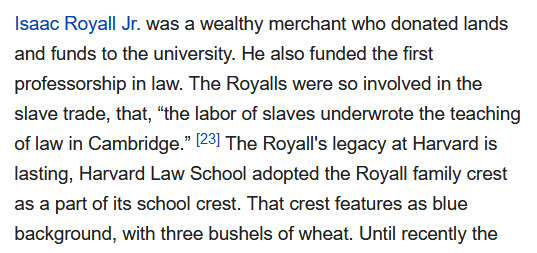
-------

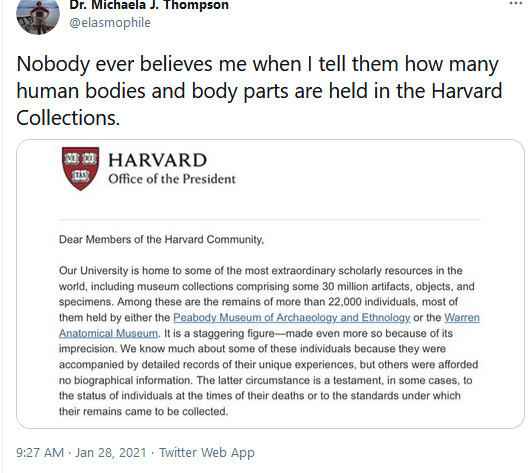
-------
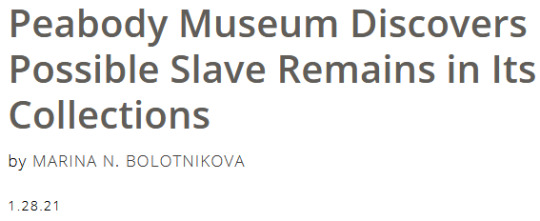
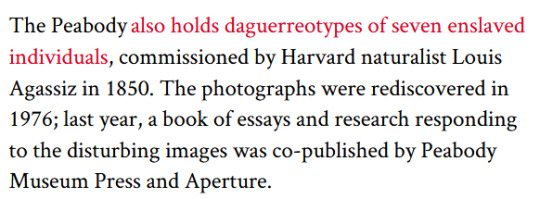
-------

Source: Caio de Freitas Paes, translated by Roberto Cataldo, published by Maria Salazar. “Harvard fund evades justice in land-grabbing case over Cerrado farm.” Mongabay Brazil (Portuguese): 7 October 2020. Mongabay (English): 15 October 2020.
-------
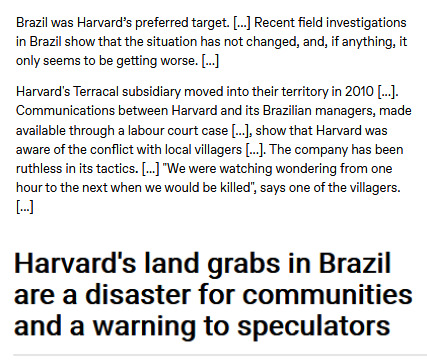

Source: GRAIN and Rede Social de Justica e Direitos Humanos. “Harvard’s land grabs in Brazil are a disaster for communities and a warning to speculators.” 8 May 2020.
-------
In 1914 Richard P. Strong, recently appointed director of Harvard’s new Department of Tropical Medicine, told a reporter from the Boston Evening Transcript that “the troubles to be feared from the spread of tropical diseases by traffic through the Panama Canal are rather heavy financial losses through disturbance of trade [rather] than any great loss of life.” [...] Nearly all of the department’s expeditions were to industrial plantations in the making. It is not by coincidence that Strong characterized the department’s work as industrial hygiene. [...]
[I]t was precisely the infrastructures of multinational firms like United Fruit Company, Firestone Tire and Rubber Company, and American petroleum companies overseas that Strong regarded as ideal assets in pursuing the kind of [...] research he envisioned.
In 1914, just one year after the creation of Harvard’s Department of Tropical Medicine, Strong took on an additional assignment that cemented the ties between his department and American business interests abroad. As newly appointed director of the Laboratories of the Hospitals and of Research Work of United Fruit Company, he set sail in July 1914 to United Fruit plantations in Cuba, Guatemala, Honduras, Costa Rica, and Panama. [...]
The Panama Canal, Strong recognized, had the potential to transform the economic and geopolitical fate of nations through the worldwide redistribution of disease. Anticipating the increased trade relations and movement of disease that the Panama Canal would bring, and influenced by the recommendations and financial backing of Harvard alumni such as Philippine governor Gen. William Cameron Forbes and patrons such as Edward Atkins, who were making their wealth in the banana and sugarcane industries, Harvard hired Strong, then head of the Philippine Bureau of Science’s Biological Laboratory, and personal physician to Forbes, to establish the second Department of Tropical Medicine in the United States (Tulane University established the first). [...]
As a shareholder in two British rubber plantations, Strong was acutely aware of the threat that Britain’s rubber monopoly posed to America’s economic interests. Strong approached Harvey Firestone, chief executive of the tire and rubber-processing conglomerate that bore his name, in December 1925 with a proposal to conduct an extensive biological and medical survey of the interior region of Liberia. Strong found a receptive ear. Firestone had negotiated tentative agreements in 1925 with the Liberian government for rights to a 2,000-acre plantation for experiments in rubber production, as well as a 99-year concession to optionally lease up to a million acres of Liberian land [...]. The biological and medical survey of Liberia undertaken by the Harvard scientists on behalf of Firestone, and ecological ideas of disease arising from their encounters with life in the tropics and work on industrial plantations, aided in altering the economy of nature and a nation. [...]
Strong and Forbes both left Manila for Boston in 1913. Strong began assembling a team of researchers and a course of instruction to take advantage of the increasing overseas presence of US firms. Forbes became an overseer to Harvard University and a director of United Fruit Company, the agricultural products marketing conglomerate best known for its extensive holdings of banana plantations throughout Central America. [...]
In 1912 United Fruit controlled over 300,000 acres of land in the tropics and had a net revenue of more than $5 million annually, holdings and profits that rapidly escalated over the next decade. With access to eight stations in different locales, free transport on company steamships, exposure to a wide variety of clinical conditions, and a ready supply of biological samples taken from the company’s hospitals and surrounding plantations, Strong boasted that no “tropical school of medicine in the world … had such an asset.” “It is something of a victory for Harvard,” he argued. “We could not for a million dollars procure such advantages.”[...]
-------
Source: Gregg Mitman. “Forgotten Paths of Empire: Ecology, Disease, and Commerce in the Making of Liberia’s Plantation Economy ...” Printed January 2017 in Environmental History. Originally published: December 2016.
320 notes
·
View notes
Text
BLOG: Anniversary celebrations and Belize's Scottish roots
As the Central American country of Belize celebrates 40 years of independence from the UK, its historical foundation has deep Scottish roots.
The dream of building a Scottish ‘empire’ in the 17th century was left in tatters with the collapse of the Darien project in 1698.
The ill fated adventure to set up a colony in modern day Panama, Central America, not only cost the lives of some 500 Scots men, women and children. It was said the financial impact of the disaster was so catastrophic, that it was a major factor in pushing the country into the Act of Union nine years later.
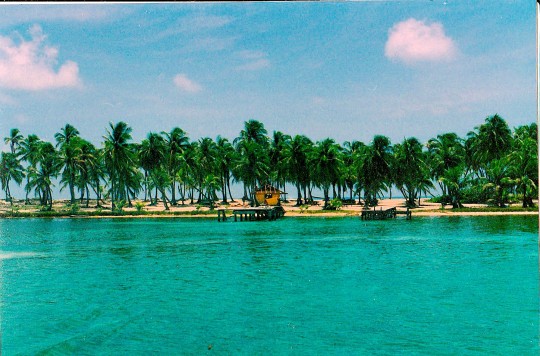
But where the Scottish government failed to make its mark in the Caribbean, a few hundred miles further north on the same coast, a small band of Scots adventurers had already established a successful community 50 years before the Darien mission set sail.
These roots put down by, among others, the Wallace, MacDonald and Forbes families survive to the present day and ensure a lasting Scottish legacy in this corner of the world, long after the painful memories of the Darien project faded from the national psyche.
This Caledonian connection is with Belize. Squeezed in between Mexico to the north and Guatemala to the west and south, at 280 miles long and around 70 miles wide this tiny enclave is around the size of Wales, but with less than one tenth of the population at under 250,000. The development of modern Belize is a remarkable story and one in which Scottish influence has had a considerable and enduring guiding role.
The history of civilisation in this part of the world stretches back to the first millennium. Southern Mexico and the area now covered by Belize was the cradle of the great Mayan dynasty long before European’s conceitedly christened this land the ‘New World’. At its height between 250 A.D. and 900 A.D it is estimated this area of land which, today is so sparsely populated, supported more than three million people. The earliest known settled community in the Maya world dates from 2,000 B.C. and from this developed a society as complex and advanced as either the better known Aztecs to the north or the Incas to the south.
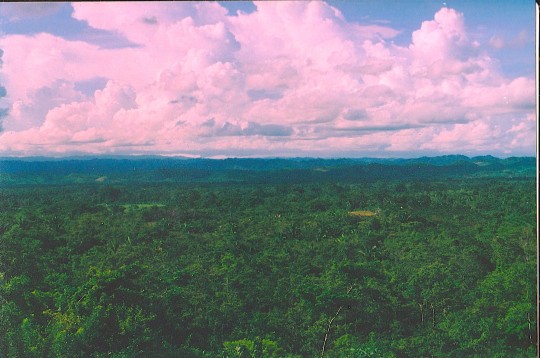
The Maya cultivated cotton and learned to dye and weave cloth. Religion, mathematics and astronomy all played an important role in their culture. Great cities flourished at Atun Ha and Carcol with grand temples, palaces and public buildings, plazas and ball courts. All before Scotland as a nation even existed.
It was just as Kenneth McAlpine was unifying the throne of Scotland and becoming the first king of the modern nation in the 9th century that the Maya reign was coming to an end.
Although the causes are not certain, archaeologists believe it was due to population pressure with the land no longer being able to provide enough food. Changes in climate, wars and scarcity of products to trade have also been presented as reason for their decline.
Certainly by the time the first Scottish adventurers set foot in Belize the Maya were no longer a unified functioning society, but survived in sporadic pockets scattered through the dense jungle landscape.
There is no exact date for when this event took place but most indicators suggest it was sometime in the 1630’s and where Darien is a story of incompetence, bad luck and political betrayal, the successful founding of modern Belize is a tale of survival and triumph against the odds.
The Darien scheme began in 1695 when the Scottish Parliament passed an Act for the establishment of a 'Company of Scotland Trading to Africa and the Indies'. A huge fundraising effort was initiated and capital of £400,000 was pulled together, an enormous sum for the time amounting to around half the total capital available in Scotland.
A small fleet of three ships with 1200 people on board sailed in July 1698 with the intention of founding a new colony in present day Panama, finally landing in November of that year.
Although the settlers enthusiastically started putting down roots in New Edinburgh, they had seriously underestimated the scale of the task in hand. This part of the Caribbean is known as the Mosquito Coast and the settlers were soon weakened by diseases of the climate; yellow fever, malaria and dysentery.
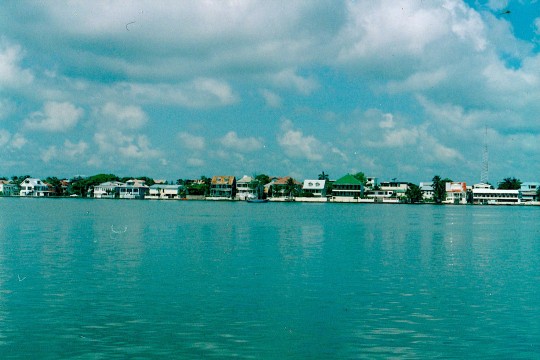
Although the settlers made treaties with the indigenous Indians the surrounding Spanish conquistadores proved a sterner test and ultimately snuffed out the fledgling colony within two years.
Abandoning the colony in 1700 only one of the three ships made it back to Edinburgh in one piece.
Meanwhile a mere 700 miles away the new settlements in Belize were already well established with a strong Scottish contingent. Although facing the same intense pressure from the surrounding Spanish the final outcome was to be much different from the fate of their kinsmen further down the coast.
The Spanish had first settled in the Americas in the years following Christopher Columbus’ voyage of discovery in 1492 and by the time the Scots arrived in Darien they were firmly established throughout the Americas...
By 1520, Hernan Cortés had conquered the Aztec empire in Mexico. His lieutenant, Pedro de Alvarado, defeated the Maya in Yucatan and expeditions were sent to conquer what is now Guatemala and Honduras. Cortés himself passed through the south-west corner of Belize in 1525.
Although thanks to local Mayan resistance they never had a firm control over the country their presence devastated the local population as it succumbed to European diseases. It is estimated that 86 per cent of local people who came into contact with the Spanish died as a result of disease or war. So by the time the first Scots landed in Belize the Maya were no longer a force in the country.
Evidence suggests this first foray was led by a Scotsman, Peter Wallace, who with 80 of his crew established a settlement on the Belize River. He was possibly born in Greenock but there are conflicting stories. What is officially recorded is that he was a one time Governor of the island of Tortuga and had served as a lieutenant under Sir Walter Raleigh in the Royal Navy.
It is thought that the name Belize is an extreme Spanish corruption of the name Wallace which is easier to understand when seen as the Spanish spelling, Belice.
Wallace’s presence in Belize was not as any officer of the crown however, but as a buccaneer, a privateer or pirate - the title depended on whether seen from a Spanish or British point of view. For the 17th century was the height of Spanish power in the Americas and the seaways of the Caribbean were packed with ships of the crown transporting gold looted from native Indian society back to Madrid.
Belize with its sheltered Cayes or islands lying off the coast and its shallow waters and dangerous barrier reef made an excellent protected raiding base for these buccaneers to prey on passing vessels. A pastime positively encouraged by the British at the time who were almost constantly in a state of war with Spain throughout this period.
But after the Treaty of Madrid in 1670 a period of peace saw the new Belizeans or Baymen reinforced by disbanded soldiers and sailors. These new arrivals turned to logging, particularly logwood which, was used to produce dye and was in great demand from the flourishing European cotton and woollen mills.
Demand for hardwoods such as mahogany also grew and the fledgling colony expanded with many new arrivals from Scotland.
According to John Holm, professor of linguistics at the University of Nassau, the Bahamas in his book ‘The Creole Language of Nicaragua’: "There seems to have been a high proportion of Scots among the British in the western Caribbean from the seventeenth century onwards."

But the new settlers did not have a quiet life with the bountiful mahogany forests attracting growing interest from the surrounding Spanish. Throughout the 18th century the Baymen experienced a series of violent skirmishes with their aggressive neighbours. For Spain claimed sovereignty over the entire New World except for Brazil which, was a recognised Portuguese possession and were insistent that the Scottish and English woodcutters were trespassers.
The raids of 1717, 1730, and 1754 were particularly damaging with evacuations into the interior necessary as the Spanish sacked the Baymen’s towns and villages.
Following their defeat in the Seven Years War though, the Spanish agreed to give the Scots and other settlers the right to cut and export timber, but still claimed sovereignty over the territory. This ongoing dispute inevitably led to more attacks and in 1779 the Spanish captured St George's Caye a small island off the coast of present day Belize City.
Agreements continued to be made between the Spanish and British about the rights of the Baymen without any long term solution. Bad feelings rumbled on until the situation came to a head with the Battle of St George’s Caye in 1798.
A defining moment in the early modern history of the country, it is still celebrated as a national holiday on September 10.
With news of an impending Spanish invasion bigger than anything ever attempted, the Baymen called for reinforcements from British forces in Jamaica.
But the future of Belize was clearly not a priority for the government of the day and they sent only one small gun brig HMS Merlin along with a company of the West India Regiment.
In total the Baymen managed to assemble only 12 vessels, most of which were wooden rafts fitted out with a few guns, backed up by a few hundred settlers and regular soldiers. Against this makeshift force the Spanish had 32 ships, 500 sailors, and 2,000 troops.
The battle was a game of cat and mouse for five days as the Spanish armada tried to out manoeuvre the defending flat boats and make a landing near the mouth of the Belize River. Once a bridgehead had been established the plan was to call in overland reinforcements from Mexico
Finally, on September 10 the Spaniards rushed into the fray with fourteen of their biggest and most heavily armed ships of the fleet. After a bloody engagement they were eventually forced into retreat again. But this time the Spanish losses were heavy and they withdrew back to their Mexican ports.
This defeat was to be the final time the Spanish tried to exert their influence over Belizean territory by force. The battle secured the country’s future first as the colony of British Honduras and later as the independent nation that is today Belize.
The scarcity of records from this period makes it difficult to determine exactly how many Scots were involved in this heroic action. But Stephen Forbes himself a Scotsman by birth and author of the historical novel the ‘Baymen of Belize’ describes the country in the late 1700s as "an essentially Scotch community."
Certainly the ‘community’ would have been backed by several hundred African slaves brought into work on the logging camps and plantations throughout the century as well as settlers from other nationalities. This mixture of colours and creeds is what makes Belize the country it is today, one of the most multicultural on earth.
A melting pot of Garifuna, from South American Indian and African descent, indigenous Mayans and Mestizos who are descended from Mayan and Spanish settlers. Add to this creole, black Africans born in the region, to a steady stream of Scots and other Europeans. Combined with American refugees from the Civil War in the 1860s and later Indians from the subcontinent and more recently Chinese, Taiwanese and German Mennonite immigrants.
A heady mixture, but one in which Scots heritage remains strong through surnames and place names.
The town of Bermuda Landing off the northern highway on the way to the Mexican border is believed to be named after the Bermuda grass planted by Scottish immigrant farmers looking to graze cattle on cleared forest land. Flowers Bank is named after Adam Flowers the Scottish immigrant who made the casting vote in the decision to defend rather than evacuate Belize City in the face of the invading Spanish in 1797. Nearby Scotland Halfmoon Village is said to be named after a homesick immigrant who arrived during the half moon, and Scottish surnames survive throughout the country.
Perhaps the greatest legacy left by the early Scots is language. The Battle of St Georges Caye might appear a mere skirmish in the grand scheme of world history. But it helped secure a free nation whose place is now secure within the international community, the only English speaking nation in Central American.
Exactly 100 years after the ill fated Darien project set sail, Scots finally realised a dream of helping to build a new society on the Caribbean coast.
0 notes
Text
https://servicemeltdown.com/book-review-sea-power-by-admiral-james-stavridis/
New Post has been published on https://servicemeltdown.com/book-review-sea-power-by-admiral-james-stavridis/
BOOK REVIEW: SEA POWER BY ADMIRAL JAMES STAVRIDIS

It is a sad state of affairs when a four-star Admiral of the United States Navy publishes a book on the geopolitics of sea power that is filled with non-sequiturs, serious omissions, and platitudes. That the book has apparently been praised by the likes of Robert Gates, Secretary of Defense; Admiral Mike Mullen, Chairman of the Joint Chiefs of Staff; and Senator John McCain is further discomfiting. It is inconceivable that these men would be so effusive in their praise if they indeed read the book.
HOW IDEOLOGY CAN GET IN THE WAY OF CLEAR THINKING
Stavridis, an appointee of President Obama to lead NATO, is an obvious globalist (he now works for the most globalist of globalist NGO’s the Rockefeller Foundation). Stavridis’ globalist ethos is his business but he – or his editor, assuming he employed one – should have been sufficiently disciplined to save it for another time or another tome. As a result, his personal views get in the way of a substantive discussion on the geopolitics of the sea: 1) Guantanamo Bay (return it to the Cubans, he says, despite the fact that it has strategic value to the U.S. and that it was won as a spoil of war); 2) the Cuban embargo, (end it, states Stavridis, without mentioning the need for democratic reforms in return and despite the fact that 190 nations trade with the communist regime); 3) walls don’t work (incredibly, he likens a wall between the U.S. and Mexico to the Maginot Line a stretch of fortifications between France and Germany during World War II that saw French troops cower before the German advance and which in the end was outflanked by the Germans via Belgium); 4) support for the Trans Pacific Partnership (despite its deleterious impact on American blue-collar workers); 5) continued support for NATO (with nary a word on how the Germans have welched on their financial obligations to the organization, or on the cowardly inaction of the organization when Turkey invaded Cyprus in 1974 despite the fact that both Turkey and Greece had been NATO members since 1952. To this day, Turkish naval aggression in the eastern Aegean meant to intimidate both Greece and Cyprus continues with hardly a peep from NATO. A former NATO commander should have had more to say on this.); 6) a rambling discussion on climate change “…some observers saying that sea levels are rising twice as fast as in the past.” (“which” observers were referencing “what” geological timeframe?)
THE WHOLE TRUTH AND NOTHING BUT THE TRUTH
Stavridis’ errors of omission are hardly excusable for a presumed naval scholar. Examples abound: 1) the crucial difference in why the English prevailed in the face of the Spanish Armada was due to the fact that “… the English ships were smaller, lighter, more maneuverable, and expert sailors manned them.” That Sir Francis Drake launched a pre-emptive strike on the port of Cadiz destroying thirty-seven Spanish vessels and 1,700 tons of barrel staves sufficient to make barrels capable of storing at least 25,000 tons water and provisions gets no mention; 2) the Spanish-American War saw a “few naval engagements in and around Cuban waters.” This, despite the fact that the battle of Santiago de Cuba at the southeastern end of the island, July, 1898, witnessed four Spanish cruisers and two destroyers sunk and nearly 500 Spanish sailors killed at the hands of the U.S. Navy; 3) according to Stavridis the USS Maine was sunk not by Spanish saboteurs but by an accidental internal explosion. A serious scholar would add that the latter explanation has never been proved conclusively. 4) “Up the coast of Central America you sail past the most dangerous countries in the world – after Panama (whatever “after” means) comes Costa Rica, Nicaragua, El Salvador, Guatemala, Honduras, Belize, and Mexico.” The fact is that El Salvador has roughly five times the number of homicides per one hundred thousand population as either Panama or Costa Rica. Honduras, for its part, has four times the number of homicides as does Panama or Costa Rica; 5) “The United States did all that it could to undermine the Cuban regime, most notably with the failed invasion at the Bay of Pigs in 1961.” Stavridis makes no mention of the fact that both Eisenhower and Kennedy approved of the plan to forestall the communist incursion on an island so close to our shores. In the end, Kennedy ignominiously cancelled all air support leaving 1,400 Cuban patriots stranded and at the mercy of the Castro regime. Worse, a Navy squadron consisting of 12 destroyers, a submarine, and two aircraft carriers 25 miles offshore which had they been engaged would clearly have tipped the battle in our favor was sent home when Kennedy wilted under political pressure. Clearly, the Cuban missile crisis would never have come to pass had the Bay of Pigs invasion been successful; 6) Less weightily, Stavridis claims Christopher Columbus was not Spanish but Italian that he was born in Genoa. Actually, Columbus never claimed to have been born in Genoa but in the Republic of Genoa. There is a vast amount of evidence that suggests Columbus was born on the Greek island of Chios which at the time was part of the Genoese republic. Again, a careful scholar would have hedged his bets and stated the evidence was not conclusive in this regard.
GEOPOLITICS OR POLITICS?
For a book presumably dealing with geopolitics little mention is made of the fact, that U.S. naval supremacy is in decline. It is clear that the Navy is undersized, ill-equipped, lacking in training, riddled by management indiscipline, and infected by progressive policies that have eroded its military readiness. Admiral Stavridis could have mentioned, if only in passing, why it seems that our vessels seem unable to sail in the South China Sea without colliding with tankers and containerships; what our failures were that led to the terrorist attack on the USS Cole which cost the lives of seventeen sailors; what measures might have prevented the arson aboard the nuclear submarine USS Miami, and the amphibious assault ship Bonhomme Richard both of which had to be scrapped due to the extensive damage they suffered. Embarrassingly, when Stavridis does mention the Bonhomme Richard it is to point out that John Paul Jones commanded a ship by that name in the 1780’s!
Unfortunately, the book by Admiral Stavridis is a fitting metaphor for the decline of the United States Navy.
0 notes
Text

Within this image is a sculpture created in 2004 by Stephen Okeke, Drums of our Fathers. To some individuals these drums appear to have no significance or purpose. However, these drums represent and honor the history, culture, and traditions of the Garifuna people. The motive behind the sculpture was to preserve the past, present, and the future of the Garifuna people. Considering Garifuna people are a small ethnic group, this sculpture symbolizes their culture for future generations and sustains their heritage.
Understanding the sculpture begins with becoming educated on the history of the Garifuna. Garifuna people are an afro-indigenous group that come from various locations such as Africa and the Caribbean. The Garifuna people were sailing when they collided into St. Vincent. They continued to reside in St. Vincent until eventually they were exiled. Today, Garifuna communities are widely known in Central America such as Belize, Nicaragua, Guatemala, and Honduras.
The subject of the sculpture are the drums and maracas. These instruments are often used in Garifuna music. Based off observing the subject matter I perceive that music has a connection within the Garifuna culture. The sculpture conveys its message through the instruments. Each individual drum represents the past of those who have loss their lives, those who exist today, and those who have yet to exist.
The instruments are often used in a traditional Garifuna dance known as Punta. Punta plays a huge role in Garifuna culture. It raises awareness to the obstacles their ancestors endured, communicate their daily lives, unleash emotions, and commemorate special moments shared amongst family members. The culture deems that music and dance is a representation of their culture and traditions. The sculpture reveals that all cultures cope in various methods. In my culture, when losing a loved one we tend to cope through our emotions. In Garifuna culture, music and dance allows them to cope through their personal issues.
The formal properties of the sculpture are in the round. The size is 16.4 X 24.5 Inches. I analyze that the middle drum is larger in size which I feel portrays the impact the present Garifuna people have on upholding the culture and ensuring they remain true to their traditions, values, and customs. The sculpture stands isolated in a vacant area. The sculpture is located in Dangriga, Stann Creek, Belize which is a Garifuna community.
It interacts with it’s surroundings because the sculpture has relations to Garifuna Culture. Surrounding the sculpture are two flags both the flag of Belize and the Garifuna flag. The flag includes three colors that portray multiple meanings such as white, black, and yellow. Black portrays the African descendants of the Garifuna and presents the oppression and challenges they faced. White appears to present peace that the individuals fought to achieve against the individuals that exiled them. Yellow represents the traditional Garifuna cuisines.
The sculpture presents a message that culture is a meaningful part of our lives socially, politically, and aesthetically. It allows us to share our diverse backgrounds, traditions, and values. It allows us to gain a sense of respect and become open minded on being educated about our differences. Values give us the opportunity to gain a new perspective and understand individuals around us. Garifuna culture has gained my attention because it is a culture that is often unrecognized and continues to be silenced. I admire how Garifuna people continue to stand for their rights and sustain their language, traditions, and culture.
0 notes
Text
Honduras
Our journey to Honduras began incredibly early - we left at 4.30am in order to avoid the congestion of Guatemala City. Most of the drive was through Guatemala, as the border crossing into Honduras was not far away from our final destination - Copán. We arrived in the hot, dusty little town at lunch time, heading straight out for a lunch of baleadas. These soft, chewy flour tortilla tasted almost crepe-like, and were filled with refried beans, cheese, and any other filling of your choice. They were cheap and absolutely delicious. The town of Copán had a bit of a frontier feel to it, but was very pretty around the central square. Many of the men wore straw cowboy hats, and fresh tropical fruits were being sold along the streets. Honduras is obviously one of the more dangerous countries of the world, so even in Copán (which is much more visited by international travellers due to its Mayan ruins), it still felt like we were very much off the beaten track.
That even we piled into a mini bus to go to the Luna Jaguar hot springs. We travelled along what felt like the world’s bumpiest road, admiring the deep green scenery, before arriving at the jungle retreat. The pools are man made, but built to blend in with the forested surroundings, however the water is heated naturally by the volcanic activity in the earth. A series of pools cascaded into one another, getting cooler the further down you went, and the hottest part steamed away as the water here can get up to a blistering 90 c. We spent a relaxing evening in the thermal waters, drinking beers until dusk, and after the sun set we had a delicious meal on a pavilion, with skewers of grilled vegetables, rice, beans, avocado and chillies.
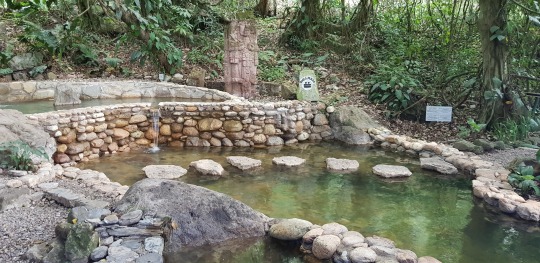
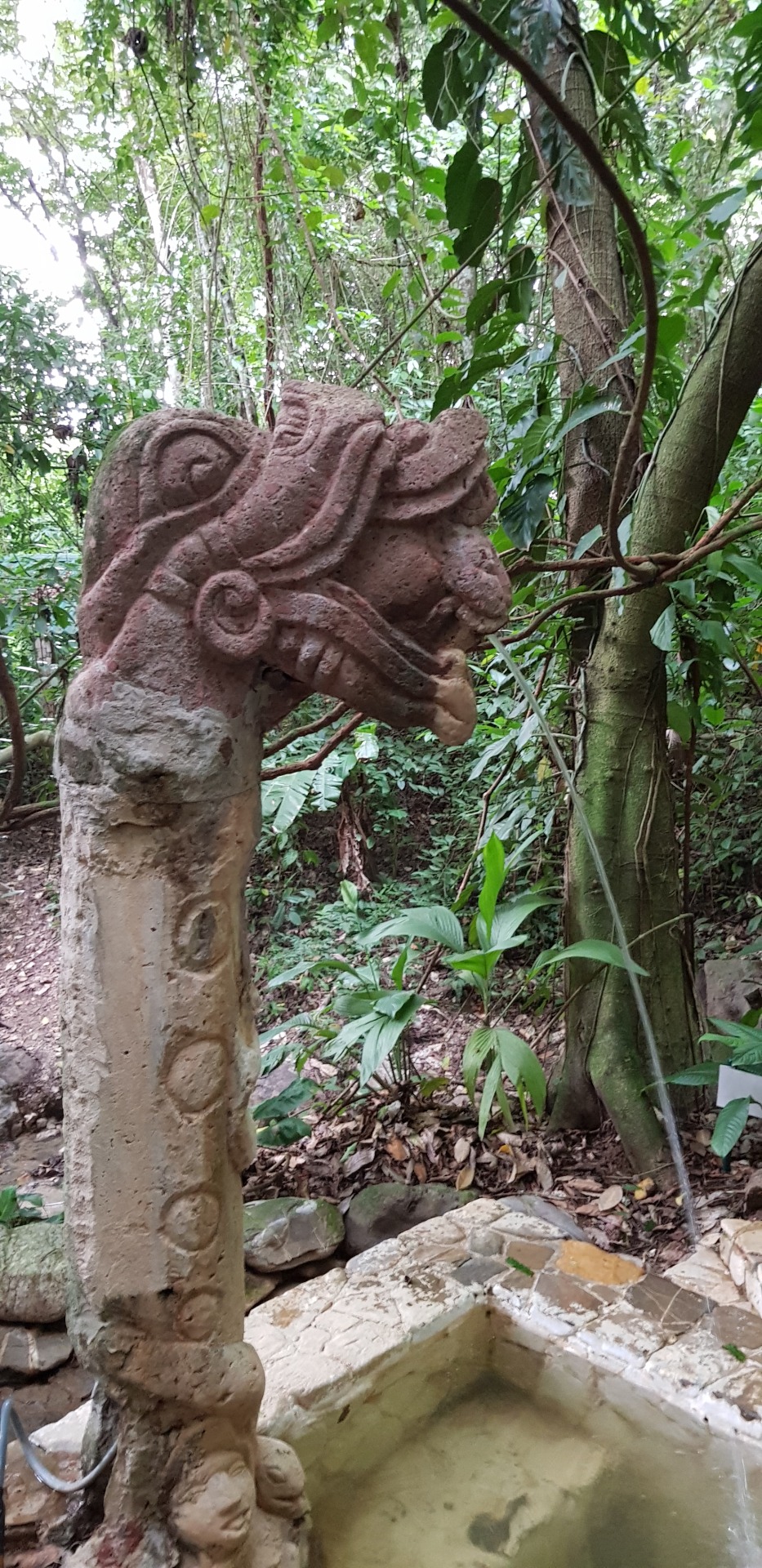
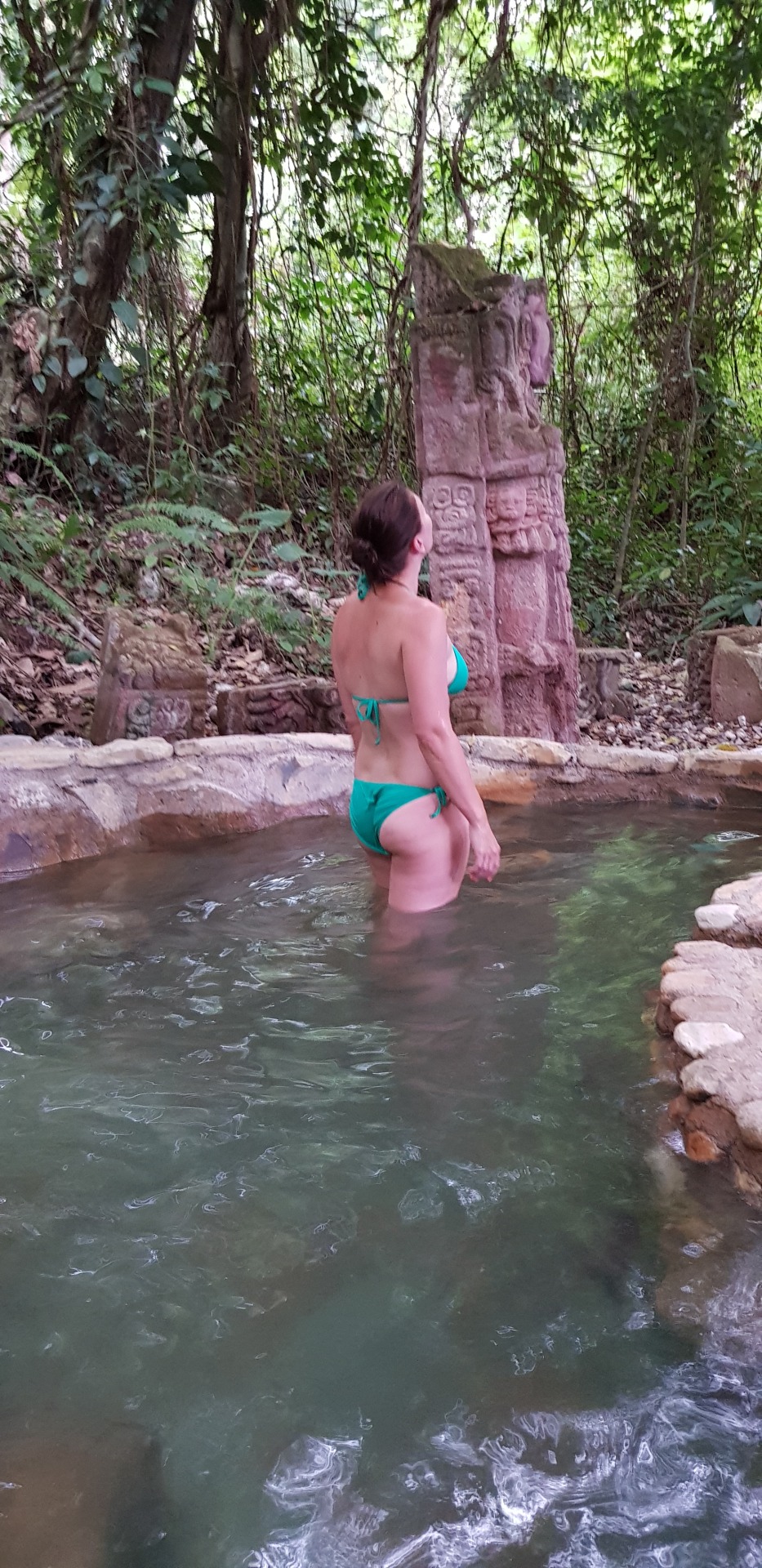

The next day it was time to explore the reason for the town’s existence: Copán Ruinas, renowned for their particularly detailed archaeological remains. These Mayan ruins were just a short walk away from the town, and at the entrance huge red macaws screeched loudly as they sailed between the trees whilst Honduran school children drew pictures as they waited to enter the site. We had a lovely guide name Saúl who shared the history of the ruins with us, as well as his interpretations and opinions on Mayan traditions and ways of life. The Mayans are believed to have arrived from Asia over the Pacific, and it really is striking how much the temples, carvings and structures at Copán resemble those we saw at Angkor Wat in Cambodia. After exploring the ruins, Dom and I followed a small nature trail in which we heard a cacaphony of tropical birds and monkeys amongst the towering ceiba trees, and spotted an agouti in the undergrowth.
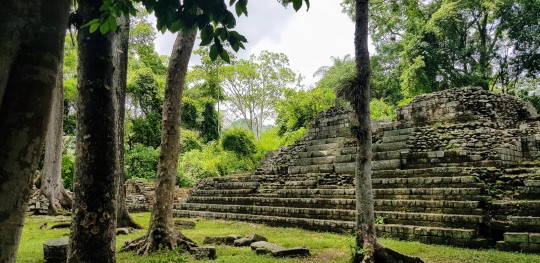
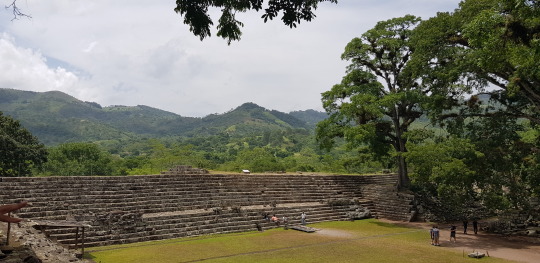
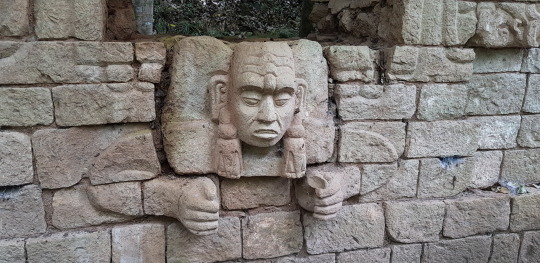
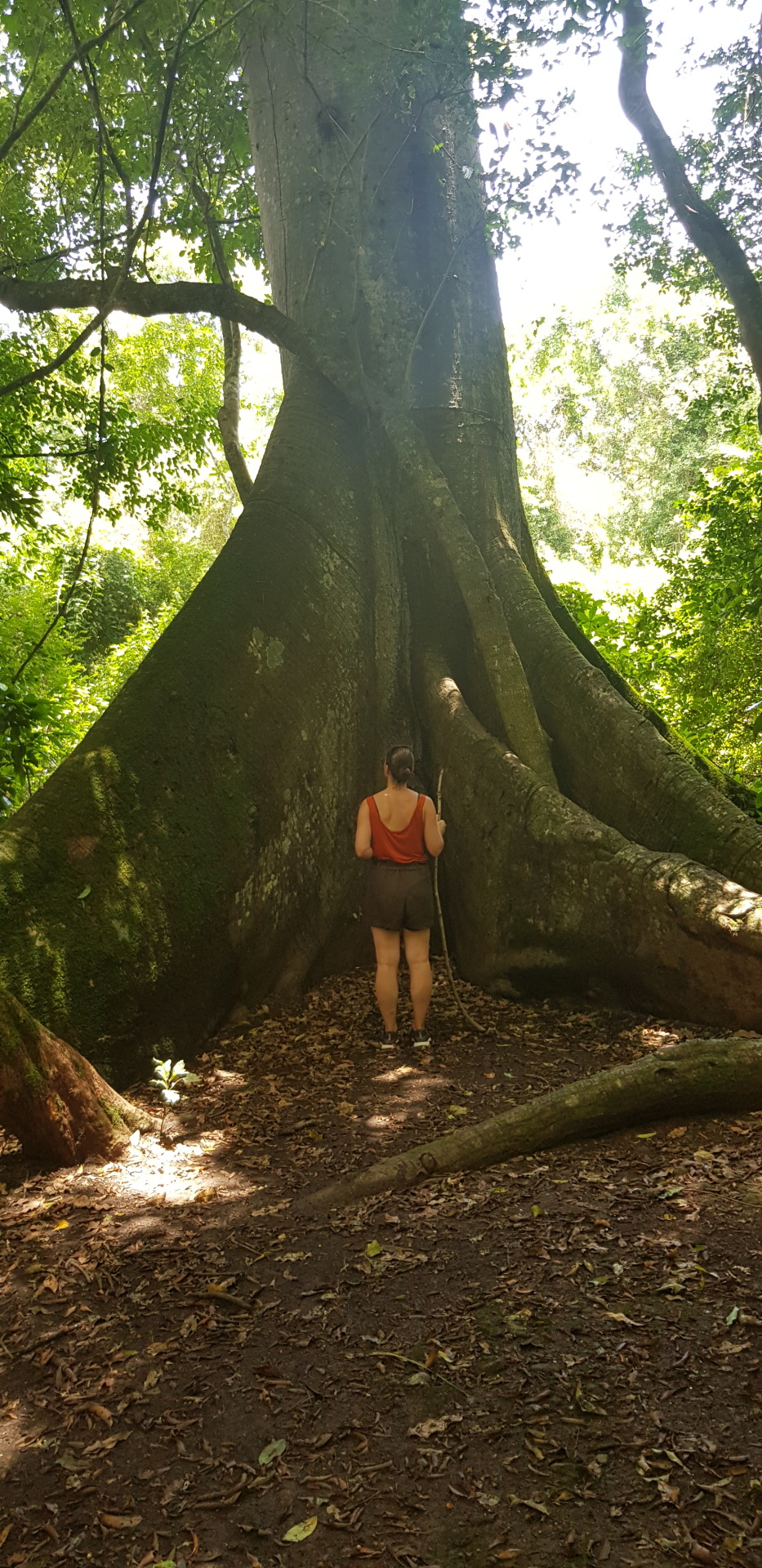
We went for lunch in a first floor bar overlooking Copán’s central square, which turned into afternoon margaritas, dinner, and finally karaoke in a small, Honduran chicken shop. This is definitely one of the most unusual places I’ve heard renditions of cheesy classics, Latino favourites and German rap!
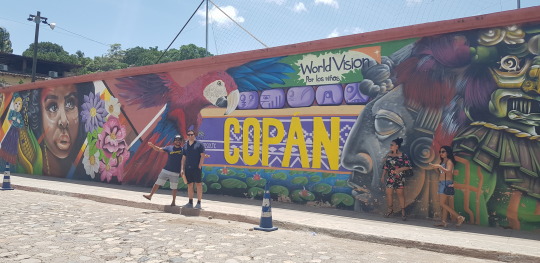
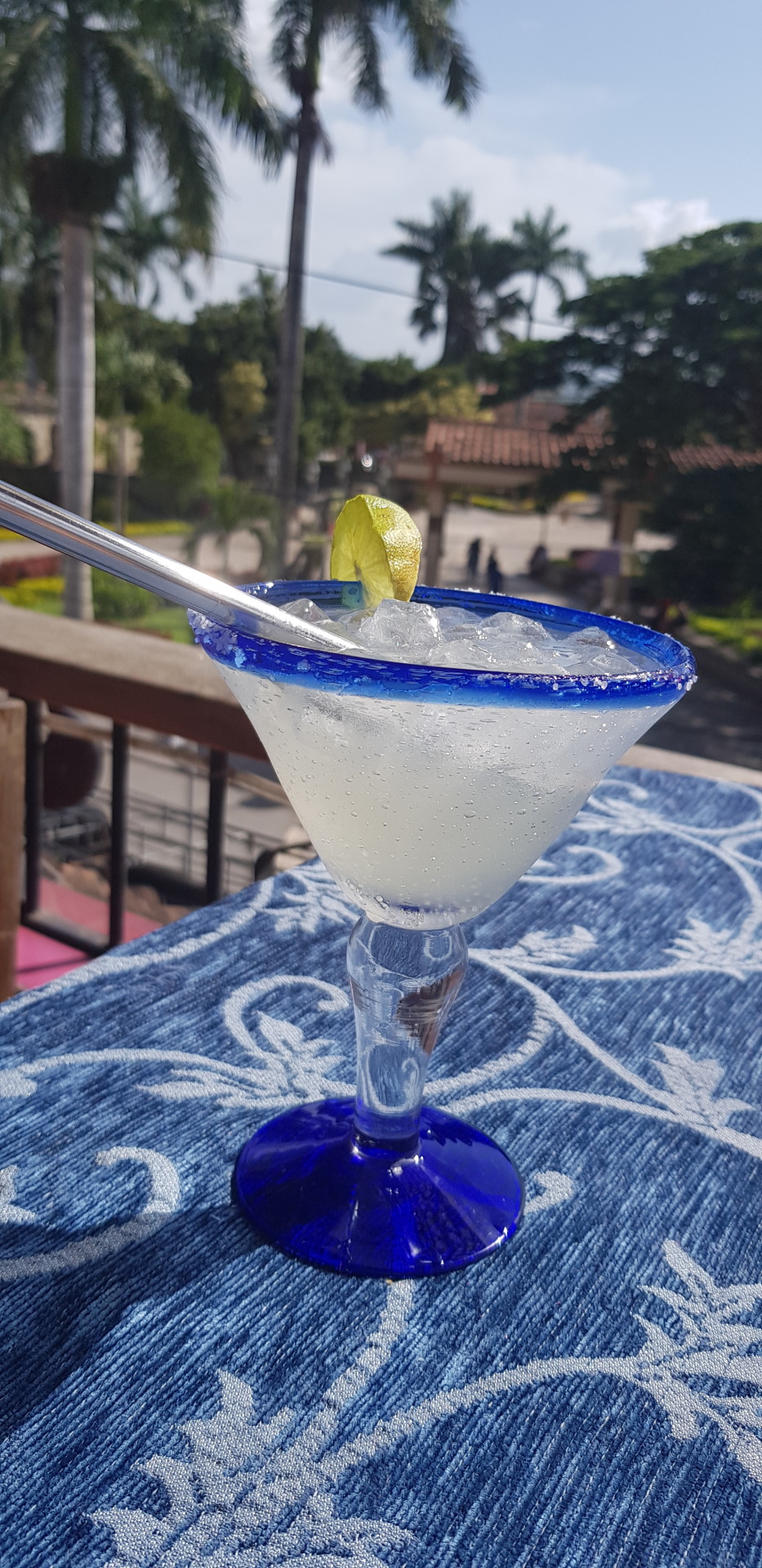
We left Honduras the next morning, to travel briefly back into Guatemala before re-crossing the border to enter El Salvador.
0 notes
Photo

Tweets For Today http://bit.ly/2Y2WTdH
CENTCOM imagery of IRGC-N Gashti craft and crew— interesting details:
- Crew wearing Hi-Viz life preserver survival vests.
- Uniforms include what may be IRGC insignia (see insets).
Observation: Unusual details, given presumption for mission deniability.
Will IRI exhibit UXO? pic.twitter.com/0tinP9wEOu
— Mark Pyruz (@INTELonIRAN) June 17, 2019
U.S. says new tanker photos point to Iran https://t.co/xGa5DsLsUq via @ReutersTV pic.twitter.com/Mv1n4SVyGA
— Reuters Top News (@Reuters) June 18, 2019
Exclusive: U.S. preparing to send more troops to Middle East - sources https://t.co/3o1CM4Ejep pic.twitter.com/XTCBaBwbAO
— Reuters Top News (@Reuters) June 18, 2019
The United States said it would not offer any more aid to El Salvador, Guatemala and Honduras unless they take "concrete actions" to deter undocumented migrants from heading for the US https://t.co/3UfbZ3KLcm
— AFP news agency (@AFP) June 17, 2019
A lawyer says Egypt's ousted President Mohammed Morsi, who collapsed and died in a Cairo courtroom, has been buried. https://t.co/Bo0wrvFzVo
— AP Middle East (@APMiddleEast) June 18, 2019
Standing #NATO Maritime Group One (SNMG1) sailing with a Danish Task Group during #BALTOPS 2019 in the Baltic Sea this weekend. pic.twitter.com/mOmetCp3ow
— NATO MaritimeCommand (@NATO_MARCOM) June 17, 2019
from War News Updates http://bit.ly/2IO0Igc
via IFTTT
0 notes